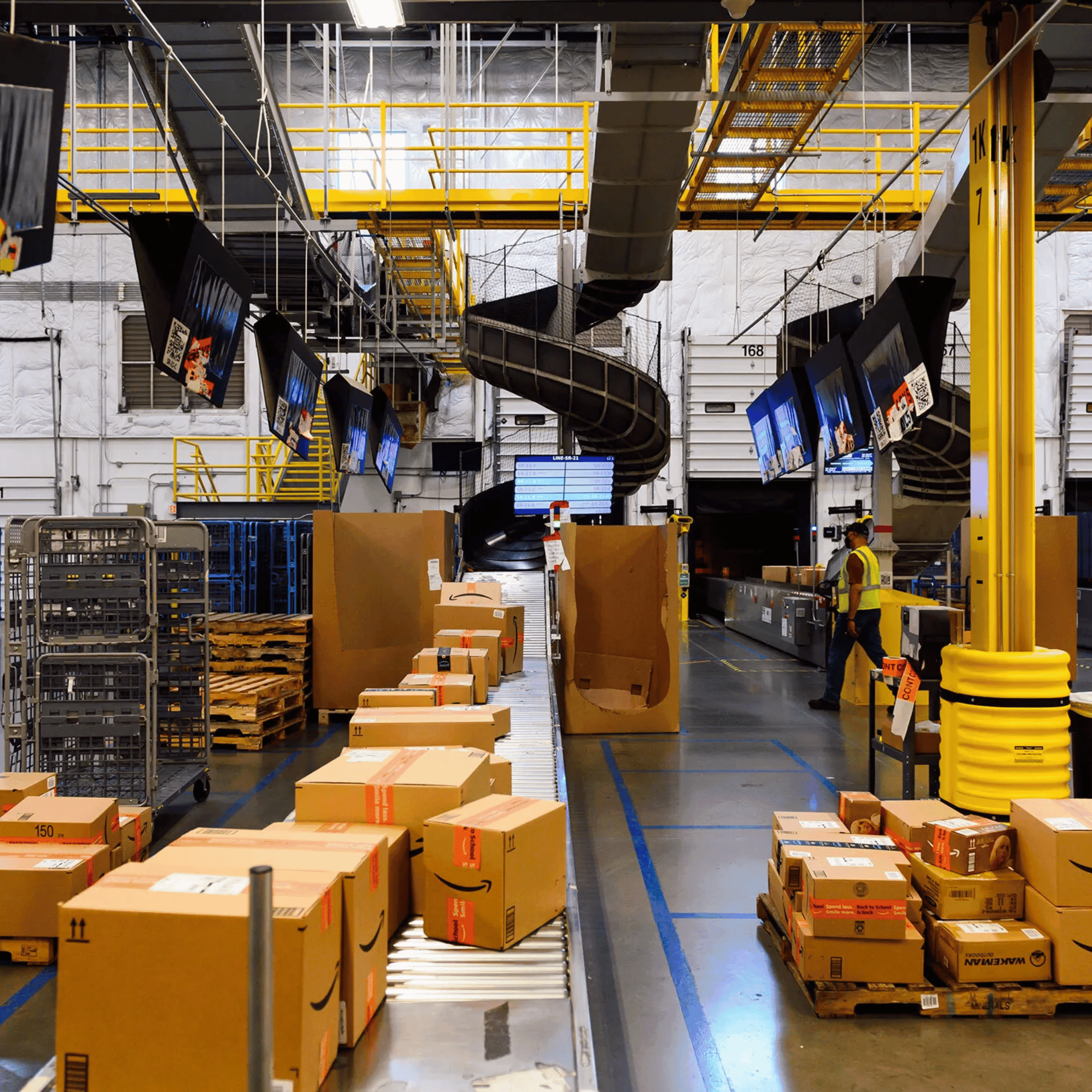As Amazon enters 2025 with a “fee freeze” on core Fulfillment by Amazon (FBA) services, sellers might expect relief. But behind the headlines, structural changes to Amazon’s fulfillment model are quietly shifting costs back to merchants. For many brands, especially those managing lean margins or complex inventories, these changes are prompting a significant shift: offloading fulfillment to third-party logistics providers (3PLs).
This article explores the 2025 Amazon FBA fee changes, the hidden cost implications, and why so many sellers are transitioning to 3PL partners for greater control, cost savings, and flexibility.

1. Amazon’s 2025 FBA Fee Freeze: What’s Actually Changing?
No Increases to Core Fulfillment Fees
Amazon announced that it will not raise U.S. FBA fulfillment or referral fees in 2025. This includes maintaining standard-size and oversized fulfillment fees at their 2024 non-peak levels, a decision designed to simplify seller planning and minimize disruption.
Inbound Placement Service Fee Adjustments
One of the more significant updates is a reduction in Amazon’s inbound placement service fees for large, bulky standard-size items. Beginning January 15, 2025, these fees will decrease by an average of $0.58 per unit, depending on the inbound location and fulfillment network allocation.
Temporary Fee Waivers for New ASINs
Sellers enrolled in the FBA New Selection Program can benefit from a fee exemption on the first 100 units per parent ASIN inbounded between December 1, 2024 and March 31, 2025. This waiver applies specifically to inbound placement fees and is intended to encourage product expansion on the marketplace.

2. The Fine Print: Hidden Fee Pressure in 2025
Although Amazon is maintaining base fulfillment rates, other changes are having a material impact on seller costs:
Elimination of Partial Shipment Splits
Previously, sellers could split inventory between multiple fulfillment centers with minimal cost impact. As of 2025, Amazon is removing the ability for standard-size items to be shipped via “partial shipment splits,” requiring either Amazon-optimized shipments or full placement fee payments. This change increases shipping and handling costs for sellers managing diverse inventories.
Increased Promotional and Discount Fees
Sellers who rely on Amazon marketing tools to boost visibility are seeing fee increases in 2025:
- Lightning Deals now cost approximately $70 per day, plus 1% of sales revenue (up to a $2,000 cap).
- Coupons now incur a $5 redemption fee, along with 2.5% of attributed sales.
- Prime Exclusive Discounts cost $100 per promotion, up from prior years.
These increases are particularly impactful for sellers who rely heavily on promotional tools to drive traffic and conversion during key sales periods.
Low-Inventory-Level and Returns Processing Fees
Amazon is introducing additional operational fees, including:
- Low-inventory-level fees, penalizing sellers who fail to maintain sufficient stock levels relative to sales velocity.
- Expanded returns processing fees that raise the cost of reverse logistics, particularly for apparel and oversized items.
These fees can quietly erode margins—especially for sellers managing seasonal or high-return-rate products.

3. Why Brands Are Moving Fulfillment to 3PLs
In response to these structural changes, many brands are diversifying their fulfillment strategy. Third-party logistics providers (3PLs) are becoming the preferred alternative for brands seeking better cost control, operational flexibility, and ownership of the customer experience.
Cost Predictability and Control
3PLs typically offer flat-rate storage and handling, without the variable fee structure Amazon applies to inventory performance, placement, or promotional activity. For brands with high-volume or bulky products, 3PLs can often reduce total fulfillment costs by eliminating hidden or fluctuating fees.
Inventory Flexibility and Multi-Channel Integration
Unlike FBA, which requires sellers to conform to rigid routing and labeling protocols, 3PLs support customized inbound logistics, direct-to-consumer shipping, and multi-channel order fulfillment—including Shopify, Faire, Walmart Marketplace, and direct B2B distribution.
This flexibility allows brands to centralize inventory in one location and serve multiple channels efficiently without fragmenting stock or duplicating shipments.
Faster Payouts and Improved Cash Flow
Amazon’s extended payment cycles, particularly during peak seasons, can strain cash flow. By contrast, 3PLs enable brands to manage cash more effectively by aligning inventory turnover with real-time sales and direct invoicing cycles.
Better Brand Experience
FBA standardizes the unboxing experience across all sellers. 3PLs enable branded packaging, promotional inserts, gift wrapping, and other customer experience enhancements that build loyalty and distinguish direct-to-consumer orders.

4. When to Consider Offloading to a 3PL
Offloading fulfillment to a 3PL makes strategic sense in several scenarios:
- Bulky or oversized items that are penalized by Amazon’s placement or storage fees.
- Seasonal inventory that may incur high storage fees during off-peak months.
- Multi-channel brands seeking to centralize inventory and avoid channel conflict.
- High-growth businesses needing more transparency, operational flexibility, and a branded customer experience.
- Apparel, accessories, or return-prone items that require specialized handling and reverse logistics.

5. How to Evaluate a 3PL vs. FBA Strategy
To determine whether transitioning away from FBA is right for your business:
- Conduct a SKU-level margin analysis comparing total landed costs (storage, fulfillment, returns, promotions) on FBA vs. a qualified 3PL.
- Model seasonal volume peaks, including Q4, and calculate potential storage fee savings.
- Audit your return rates to determine if expanded returns processing fees are impacting your profitability.
- Review your promotional strategy—are you relying on Lightning Deals, coupons, or discounts that now carry higher fees?
- Assess your customer experience goals—does FBA align with your brand strategy?
What Amazon’s 2025 Fee Structure Means for Sellers
While Amazon’s 2025 fulfillment fee policy presents itself as stable, the underlying structural changes are pushing many brands to reevaluate their reliance on FBA. By offloading to 3PLs, sellers can regain control over margins, inventory, and customer experience—while still maintaining a presence on Amazon through FBM or hybrid models.
Sellers who proactively analyze their cost structure and diversify their fulfillment strategy will be best positioned to thrive in 2025’s increasingly complex ecommerce landscape.

Interested in exploring 3PL fulfillment?
Contact Us





